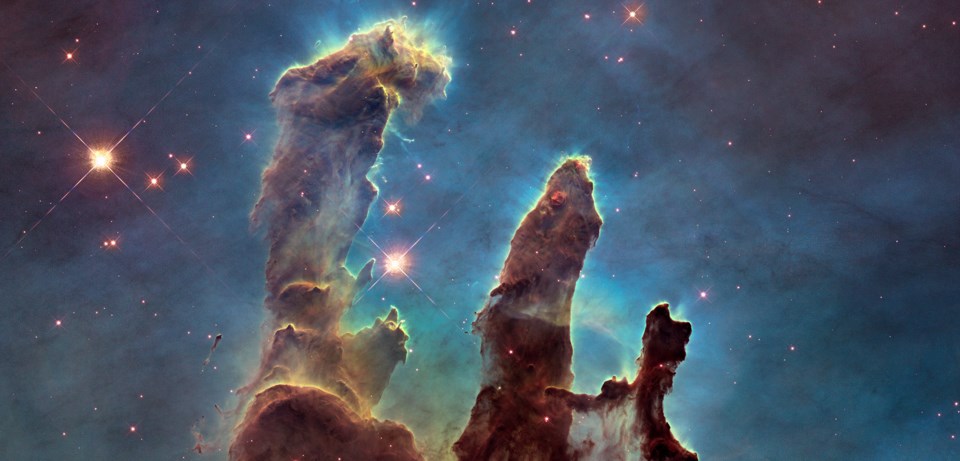Each month, we share a Star Gazing Guide presented and organized by The Great Orbax, a science communicator from the University of Guelph's Department of Physics and local science education advocate.
Greetings star gazers!
Orbax here.
I'm a science communicator from the department of physics at the University of Guelph and I'm here to fill you in on what our July night skies hold for the astro-curious out there, young and old.
In this month's video I discuss where in the sky you find the fabled Pillars of Creation. Most of you likely recognize the Pillars of Creation from recent images captured by the James Webb Space Telescope (JWST). Originally discovered in 1920 by astronomer John Charles Duncan, the image taken by the Hubble telescope in 1995 if the Pillars was named one of the top ten Hubble images of all time and has been noted for its cultural impact appearing on t-shirts, posters and coffee cups around the globe.

So what are they?
Well, the Pillars are three large clumps of gas (primarily hydrogen) and interstellar dust that are currently (or at least seven light years ago were) giving birth to new stars. The long pillar on the left-hand side of the image about four light years old, and the little protrusions along the top of the pillars are bigger than our solar system!
Just this past month, NASA released an incredible visualization of the Pillars in 3-D, using the data from both the Hubble and Webb Telescopes. Why combine these images? The Hubble images are primarily in the visible spectrum of light while the JWST sees in the infrared. Infrared light is at a longer wavelength than visible, meaning it can 'slip' past space dust and other debris in between us and the Pillars revealing previously hidden details. You can see this incredible visualization here:
A truly beautiful glimpse into the depths of our universe. Now ... where can you see this is in the night why? Well for that info you'll have to watch this month's Star Gazing video!
I hope you enjoy this month's Star Gazing Guide. If you want to learn more, check out the July Star Gazing Guide video on the Guelph Physics YouTube channel. Not only is Star Gazing a great way to learn about space, planets and the stars but it's also a great way to spend with other curious minds.
Until next month I wish you clear skies and I hope you take some time ... to look up.
